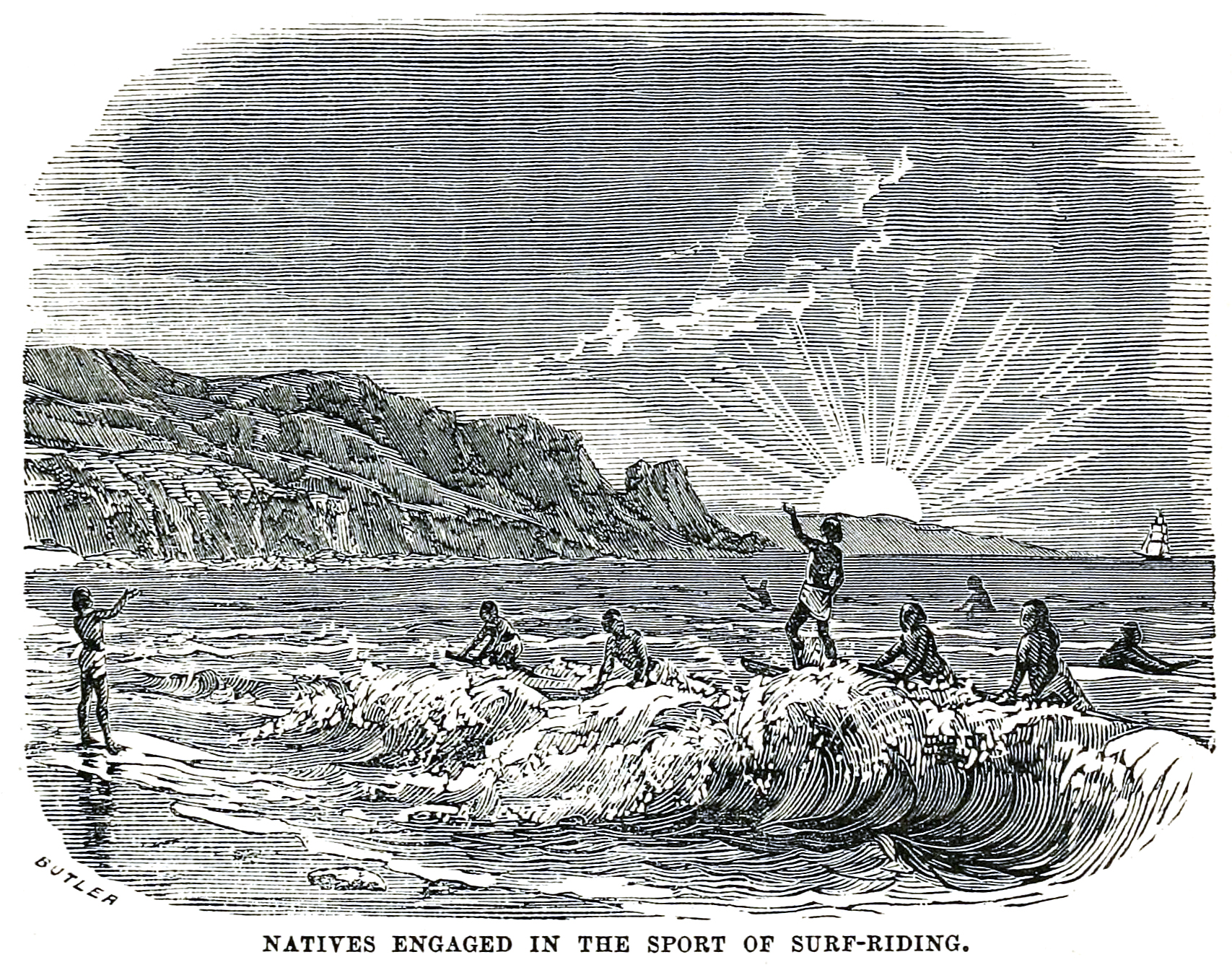If you’re a surfer, you know that surfing is more than just a sport – it’s a way of life. The surf lifestyle is all about embracing the ocean, spending time in nature, and connecting with a community of like-minded individuals. Whether you’re a beginner or a seasoned pro, the surf lifestyle has something to offer everyone.
Living the surf lifestyle means more than just catching waves. It’s about understanding the ocean, respecting the environment, and taking care of your body and mind. From eating a healthy diet to practising mindfulness, surfers prioritize their well-being both in and out of the water. In this article, we’ll explore what it means to live the surf lifestyle and how you can incorporate these values into your own life.

The Essence of Surf Lifestyle
Surfing is more than just a sport, it’s a way of life. The essence of the surf lifestyle is centered around a deep connection with the ocean, respect for nature, and a sense of freedom and adventure. The surf lifestyle is not just about riding waves, but also about embracing a culture that has been shaped by the ocean and the people who ride it.
Surfers are often viewed as laid-back and carefree individuals, but the reality is that the surf lifestyle requires dedication, discipline, and sacrifice. To become a skilled surfer, you must spend countless hours in the water, mastering the art of reading waves, learning surfing etiquette and perfecting your technique. This requires a deep love and respect for the ocean, as well as a willingness to put in the hard work necessary to become a proficient surfer.
The surf lifestyle is also heavily influenced by surf culture, which includes the people, language, fashion, and lifestyle surrounding the sport of surfing. Surf culture has a rich history that dates back to the ancient Polynesians, who were the first to ride waves. Today, surf culture is a global phenomenon that has influenced everything from music and fashion to art and film.
At its core, the surf lifestyle is about embracing a sense of freedom and adventure. Surfers are constantly seeking out new waves and exploring new places. Always pushing themselves to their limits and experiencing the thrill of riding the perfect wave. This sense of adventure is what draws so many people to the surf lifestyle, and what keeps them coming back year after year.
Historical Roots of Surfing
Surfing has a rich history that dates back centuries. The ancient Polynesians are credited with inventing the sport, and it was an integral part of their culture and way of life. Surfing was not just a recreational activity for the Polynesians, but it was also used for transportation, fishing, and religious ceremonies.
The first surfers used wooden boards, which were often made from the wood of the koa tree. These boards were heavy and difficult to maneuver, but they were effective in riding the waves. The art of shaping surfboards evolved over time, and the surfboards became lighter, more maneuverable, and easier to ride.

By Butler / Hutchings’ California Magazine – Hutchings’ California Magazine, Volume 3, Number 5 (November 1858), Public Domain, Link
In the early 20th century, surfing began to gain popularity in Hawaii and on the West Coast of the United States. Duke Kahanamoku, an Olympic swimmer from Hawaii, is credited with introducing surfing to the rest of the world. He travelled around the world demonstrating his surfing skills and helped to popularize the sport.
Surfing culture began to develop in the 1950s and 1960s. It was characterized by a laid-back, carefree lifestyle. Surfing became more than just a sport; it was a way of life. The popularity of surfing impacted and influenced art, music, literature, film, fashion, and most importantly, jargon. Surfers invented their own language, which included words like “gnarly,” “tubular,” and “radical.”
In addition to Hawaii and the West Coast of the United States, surfing also became popular in the Pacific Islands and Australia. Jack London, the American author, even wrote a book about surfing in Hawaii called “A Royal Sport: Surfing in Waikiki.” Today, surfing is a global sport with millions of enthusiasts around the world.
Professional Surfing and Competitions
If you are a fan of surfing, you are probably aware of the professional surfing competitions that take place around the world. The Championship Tour (CT) is the highest level of professional surfing, where the best surfers in the world compete for the world title. The CT is part of the World Surf League (WSL), which is the governing body of professional surfing.

The CT consists of both men’s and women’s divisions, and the competition takes place at some of the best surf spots around the world. The competition format is a knockout-style event, with surfers competing in heats to advance to the next round. The winner of the final heat is declared the event champion and earns valuable points towards their overall ranking on the CT.
One of the most dominant surfers on the women’s CT is Carissa Moore. She has won multiple world titles and is known for her powerful and stylish surfing. Moore is a role model for young girls who aspire to become professional surfers, and she is also an advocate for gender equality in surfing.
Professional surfing is a demanding sport that requires a high level of skill, fitness, and mental toughness. The surfers on the CT travel around the world for months at a time, competing in different conditions and adapting to different time zones. They also face the challenge of dealing with injuries and setbacks, which can have a significant impact on their performance.
In addition to the CT, there are other professional surfing events that take place around the world, such as the Qualifying Series (QS) and the Big Wave Tour (BWT). The QS is a series of events that provide surfers with the opportunity to qualify for the CT, while the BWT is a series of events that focus on big-wave surfing.
Surf Destinations
If you’re looking for some of the best surf destinations in the world, you have plenty of options to choose from. Whether you’re planning a surf trip or just looking for a new place to catch some waves, there are many great spots to explore. Here are a few of the top surf destinations to consider:
California
California is one of the most popular surf destinations in the world, with a wide range of beaches and breaks to choose from. From the famous surf spots of Southern California like Huntington Beach and Malibu to the more rugged and remote beaches of Northern California, there is something for every level of surfer. With consistent waves and a laid-back surf culture, California is a great place to catch some waves.
Hawaii
Hawaii is another top surf destination, with some of the most iconic surf spots in the world. From the massive waves of the North Shore to the more mellow breaks of Waikiki, Hawaii has something for every type of surfer. With a rich surf history and a welcoming surf culture, Hawaii is a must-visit destination for any surfer.
Southern California
Southern California is a mecca for surfers, with warm water, consistent waves, and a thriving surf culture. From San Diego to Santa Barbara, there are countless surf spots to explore, each with its own unique vibe and style. Whether you’re a beginner or a seasoned pro, Southern California is a great place to catch some waves and soak up the surf lifestyle.
USA
If you’re looking to explore more of the United States, there are plenty of other great surf destinations to consider. From the East Coast to the Gulf Coast to the Pacific Northwest, there are surf spots all across the country. While some areas may not have the consistent waves of California or Hawaii, they still offer plenty of opportunities to catch some waves and experience the surf lifestyle.
Whether you’re planning a surf trip or just looking for a new place to catch some waves, there are many great surf destinations to explore. From the iconic surf spots of California and Hawaii to the lesser-known breaks of the East Coast and Gulf Coast, there is something for every level of surfer. So grab your board, hit the road, and start exploring the world’s best surf destinations!
Surfing and Art
Surfing and art have a long-standing relationship. The surf culture has inspired artists for decades, and many surfers are also artists themselves. From surfboard design to paintings and sculptures, surfing has influenced various forms of art.
One of the most famous surf artists is Rick Griffin. He was a surfer and cartoonist who created iconic posters and album covers for bands like the Grateful Dead and Jimi Hendrix. His psychedelic art style captured the free-spirited and rebellious nature of the surf culture in the 1960s.
Surfboard design is another area where art and surfing intersect. Surfboards are not just functional equipment but also works of art. Many surfboard shapers use their boards as a canvas to express their creativity. From colorful resin tints to intricate designs, surfboards are a reflection of the shaper’s artistic vision.
In addition to surfboard design, there are also surf art galleries and exhibitions around the world. These galleries showcase paintings, sculptures, and photographs that capture the beauty and excitement of surfing. Some notable surf art galleries include the Surf Gallery in Laguna Beach, California, and the Surf Art Expo in Hossegor, France.
Surfing and art continue to inspire each other, and the relationship between the two will only continue to grow. Whether you are a surfer or an art enthusiast, the surf culture offers a unique perspective that is both inspiring and captivating.
Surfing in Music and Film
Surfing has been a significant influence on music and film culture for decades. Many popular songs and movies have been inspired by the sport and the lifestyle that comes with it. From the Beach Boys to Dick Dale, surf music has a distinct sound that captures the essence of the ocean and the thrill of riding waves.
In the 1960s, Hollywood capitalized on the popularity of surfing with beach movies like “Endless Summer” and “Point Break.” These movies showcased the beauty of the ocean and the laid-back lifestyle of surfers. The success of these movies helped to popularize surfing and surf culture around the world.
One of the most influential figures in surf film history is Bruce Brown. His documentary “Endless Summer” (1966) followed two surfers as they traveled the world in search of the perfect wave. The film’s success inspired a sequel and helped to establish Brown as a pioneer in the surf film genre.
Surfing has also had a significant impact on the music industry. The Beach Boys were instrumental in creating the genre of surf music, with hits like “Surfin’ USA” and “California Girls.” Dick Dale, known as the “King of Surf Guitar,” pioneered the use of reverb and distortion in his music, creating a sound that perfectly captured the energy and excitement of surfing.
In recent years, surfing has continued to influence popular culture. The 2015 film “Point Break” was a remake of the classic surf movie and featured extreme sports like surfing, snowboarding, and wingsuit flying. The film’s soundtrack featured a mix of electronic and rock music, reflecting the diverse tastes of modern surfers.
Last Words
Overall, surfing has had a profound impact on both music and film culture. Its influence can be seen in everything from classic beach movies to modern action films. Whether you are a surfer or just a fan of the sport, surfing in music and film is an essential part of the culture and history of the sport.
How useful was this post?
Click on a star to rate it!
Average rating 0 / 5. Vote count: 0
No votes so far! Be the first to rate this post.

